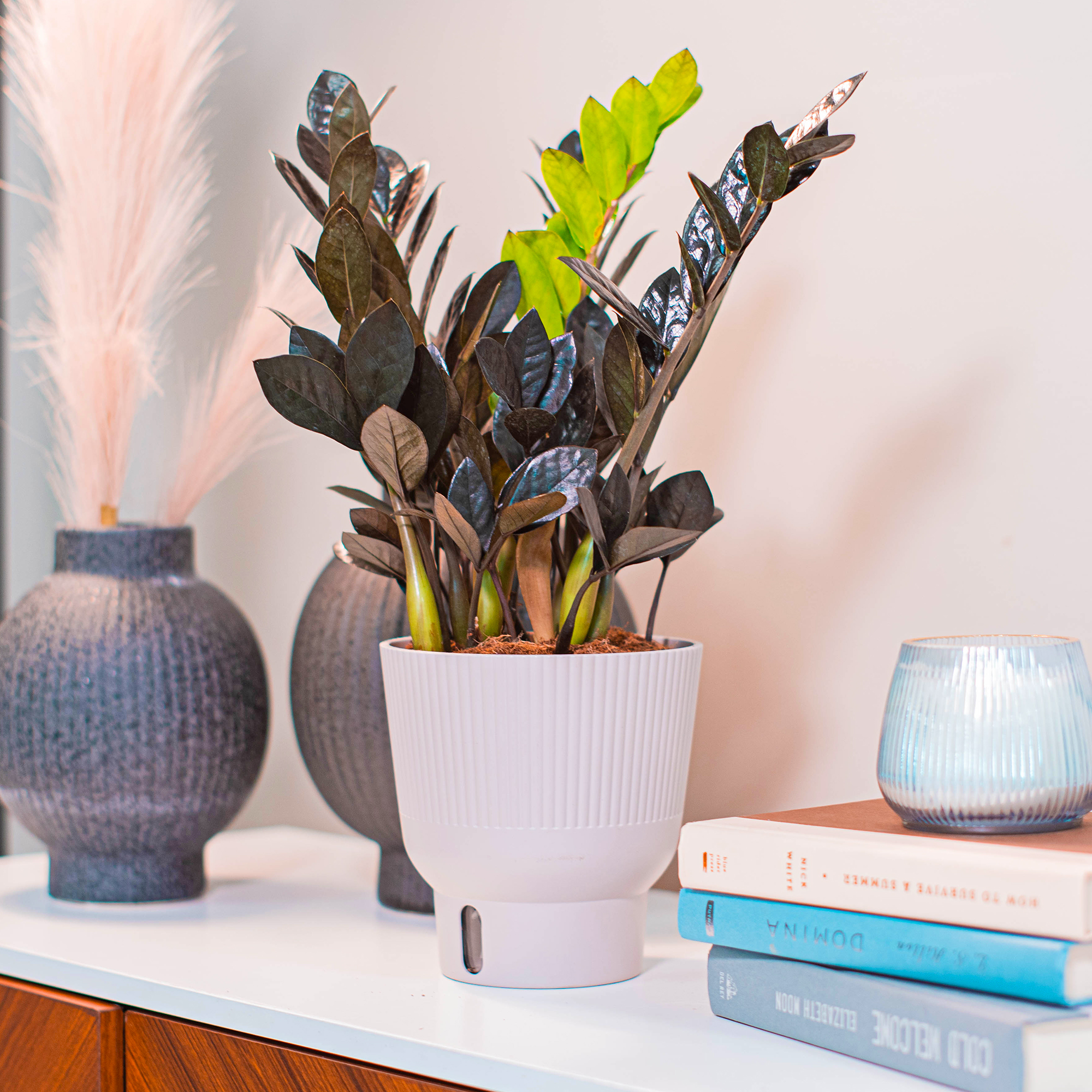Post-Holiday Plant Clinic: Solve These Common Issues To Keep Seasonal Favorites Thriving For Years
Don't toss your holiday plants! Learn expert tips to fix common issues, from shedding poinsettias to leaning amaryllis, and keep plants going year after year.

Amy Draiss
Remember last month when your jolly red poinsettia or dazzling magenta Christmas cactus looked so full of promise and seasonal joy? If it's now starting to look a bit lackluster, you'd be forgiven for feeling the temptation to toss it. But think before you do. While you could treat these festive houseplants as one-hit wonders, destined to be replaced with shiny new ones next year, this really is a waste.
With a little TLC, these popular Christmas flowering plants can be nurtured and restored to vitality in time for the next holiday season. Discover the common issues growers face once the festivities are over, and learn how to get the best out of your new houseplant.
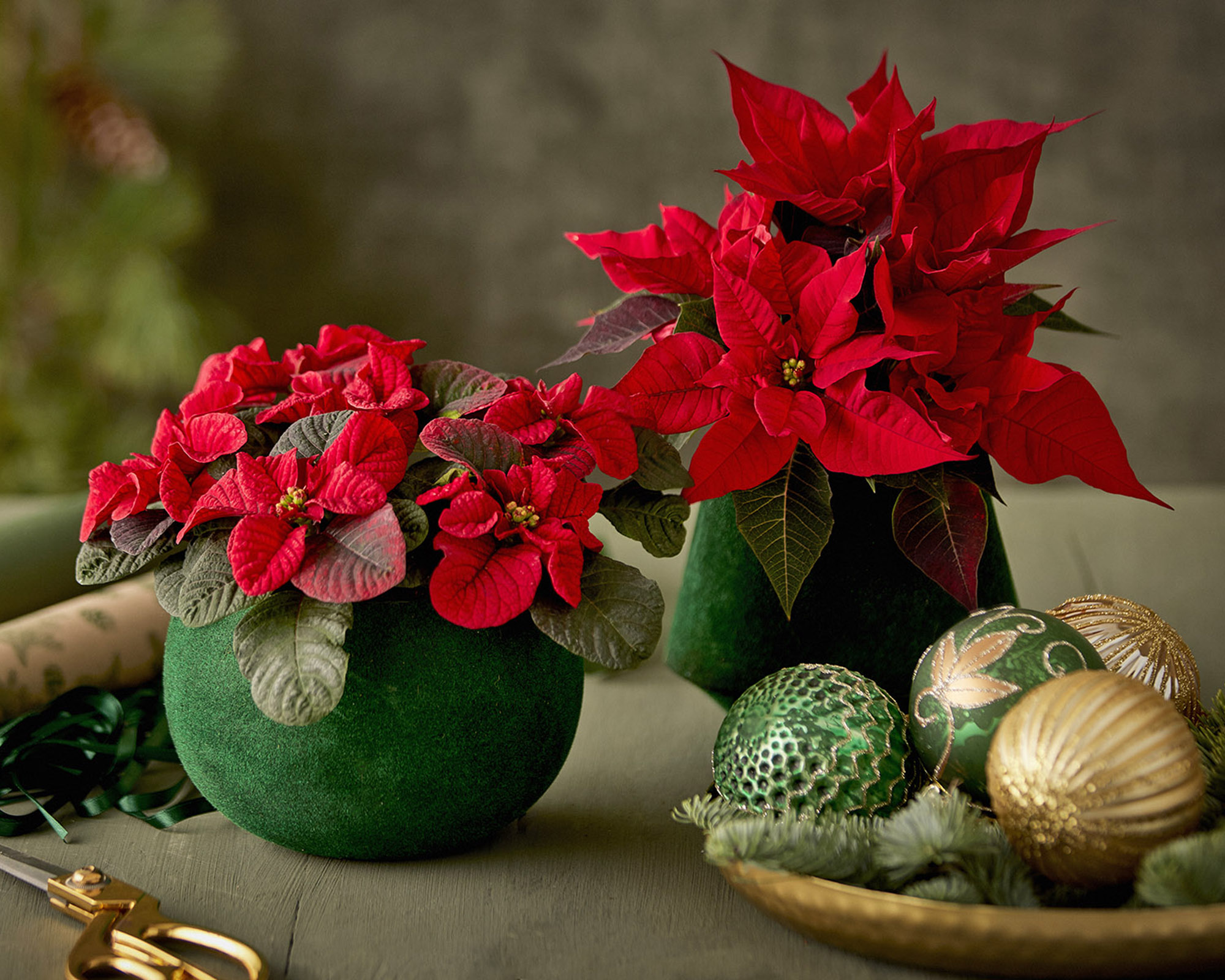
1. Poinsettia Dilemma – Keep it or Toss it?
Q: I bought a poinsettia before Christmas and while there is still life left in it, the bracts are steadily fading. Is it worth keeping it going, or should I call it quits and get a new one next year?
After Christmas, the once-glorious poinsettia often starts to fade, and many people wonder if it’s worth keeping around. Let’s face it – making a poinsettia flower again the following year can be tricky.
If you decide to toss your poinsettia into the compost heap, I won't judge you; after all, they’re inexpensive and widely available each holiday season. But for the determined plant lover, there’s something deeply satisfying about keeping one alive and seeing it turn red again next Christmas.
The main challenge with a poinsettia reblooming lies in its photoperiodism – it needs long nights and short days to trigger those iconic red bracts. This means, starting in fall, you’ll have to mimic its natural environment by giving it 14 hours of complete darkness each night for about 8-10 weeks. Even the glow of a streetlight can disrupt this process. Add to that the necessary poinsettia care – bright, indirect light during the day, consistent watering, and the right temperatures – and it’s easy to see why many people give up.
Even with all this effort, success isn’t guaranteed. Poinsettias are finicky and don’t always respond as expected. But if you’re up for the challenge, the payoff can be magical. It might take some trial and error, but when those bracts turn red, you’ll know it was worth it. And if it doesn’t work out? Well, there’s always next year’s holiday display.
Sign up for the Gardening Know How newsletter today and receive a free copy of our e-book "How to Grow Delicious Tomatoes".

2. Leaf Shedding Woes
Q: My poinsettia went from fabulous to leafless in the space of just a few weeks – where did I go wrong?
One of the main reasons poinsettia leaves shrivel and drop after Christmas is environmental stress. These plants are sensitive to changes in temperature, light, and humidity, all of which are common in the post-holiday shuffle. Drafty windows, hot air from heaters, or moving the plant from one spot to another can all shock the plant, making leaves shed.
Overwatering or underwatering can also play a role and are common poinsettia care mistakes. These plants like their soil slightly moist but never soggy – too much water can lead to root rot, while too little leaves them thirsty and stressed.
To help your poinsettia bounce back, start by placing it in a stable environment. Keep it away from heat sources, drafts, and direct sunlight, and aim for a room with temperatures between 60 to 70°F (16 to 21°C). Water poinsettias when the top inch of soil feels dry, and always ensure proper drainage.
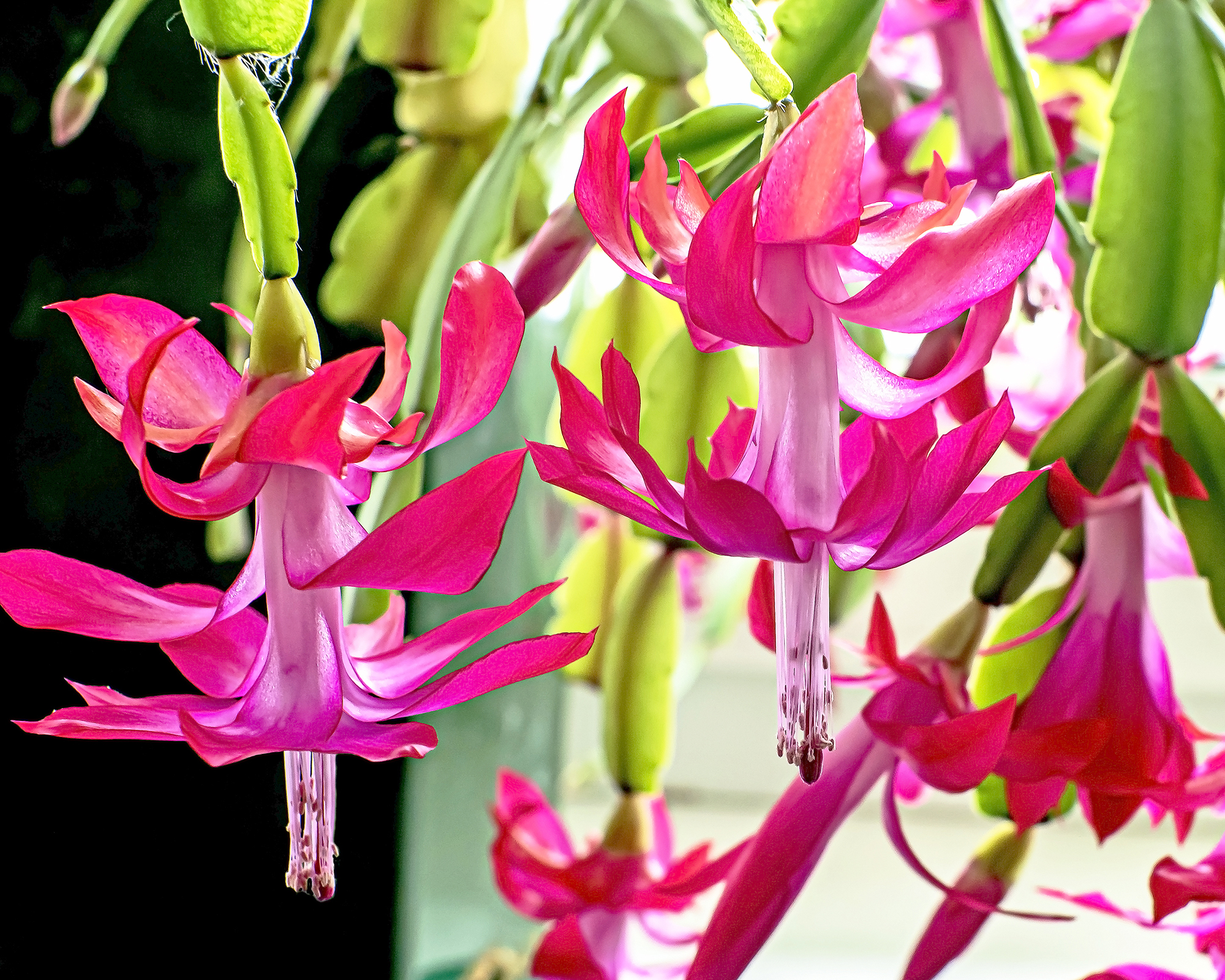
3. Saving a Limp Christmas Cactus
Q: My Christmas cactus looked beautiful over the holidays with its cascading flowers. But now January has rolled around, the flowers have faded, and the stems have started to look limp and wilted. It feels like the plant has given up!
A Christmas cactus wilting is usually trying to tell you something, and more often than not, the issue comes down to watering. These plants are fussy about moisture – not too much, not too little. You need to find the right balance with your Christmas cactus watering routine. Overwatering can lead to root rot, which deprives the plant of the nutrients it needs to stay firm and upright. On the other hand, if the soil is allowed to dry out completely, the plant becomes dehydrated and the stems lose their structure.
Temperature and light also play a role. Christmas cacti prefer cool, stable conditions and bright, indirect light. A room that’s too hot or a spot near a drafty window can stress the plant, causing it to wilt.
To revive a limp Christmas cactus, start by checking the soil. If it’s waterlogged, let it dry out slightly before watering again, and make sure the pot has proper drainage. If it’s bone-dry, give it a thorough drink and monitor its recovery. Move it to a location with consistent light and temperatures between 60 to 70°F (16 to 21°C), away from any drafts or heaters.
With regular Christmas cactus care, your plant will perk up, ready to dazzle again next year. It’s all about finding that delicate balance.
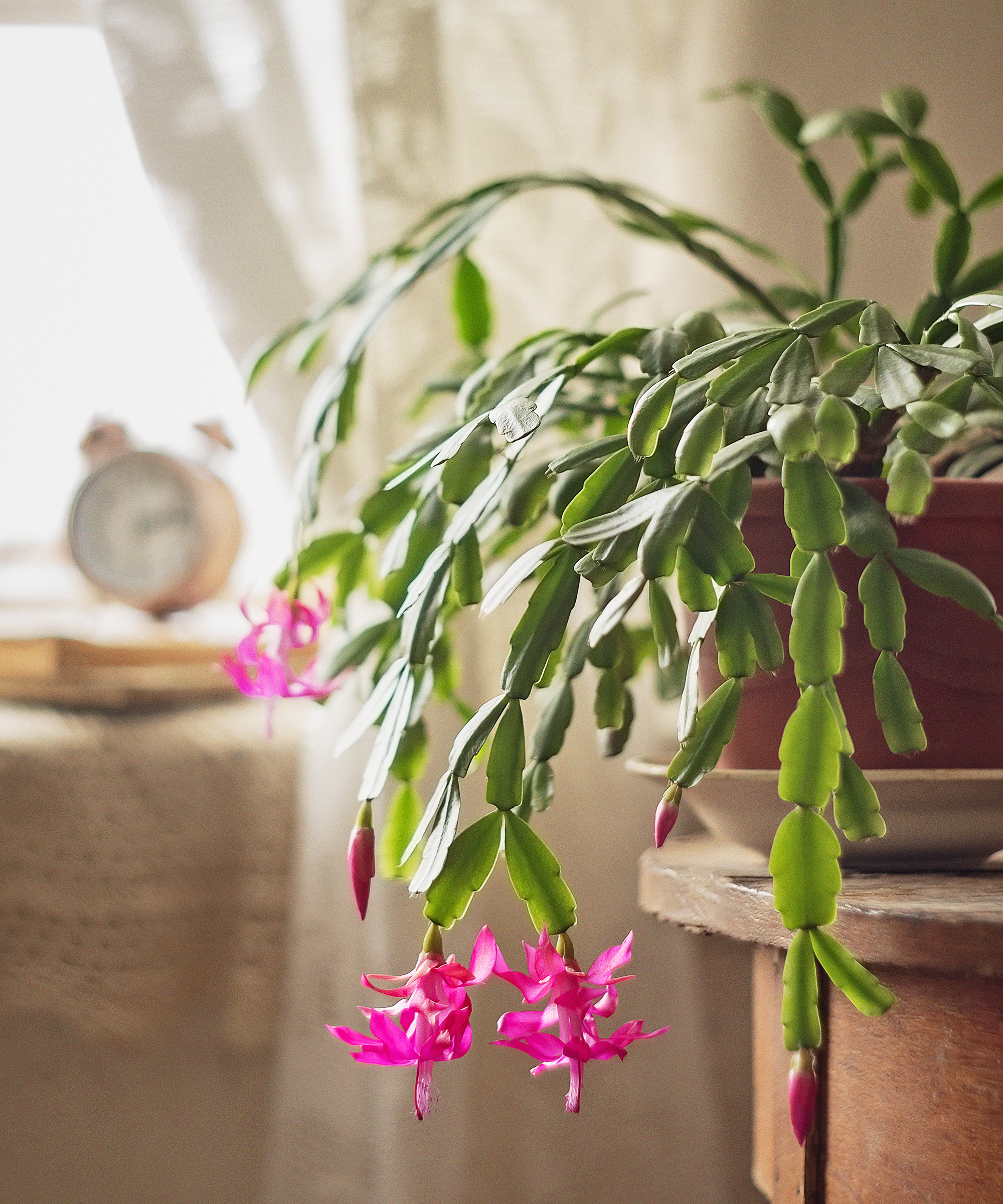
4. Encouraging a Spring Rebloom
Q: I've heard it's possible to make a Christmas cactus bloom for a second time each year in the spring. How can I achieve this?
Getting a Christmas cactus to bloom again in the spring is certainly possible, but not always straightforward. Many growers find it frustrating when their cactus stubbornly refuses to flower again, even when it seems perfectly healthy. The key lies in understanding what triggers the blooms and creating the right conditions.
A Christmas cactus responds to changes in light and temperature to set its buds, much like it does before its holiday display. After the first bloom cycle ends, the plant often needs a bit of a break, which means it’s unlikely to flower again without some encouragement. One of the main reasons it doesn’t rebloom is that it’s not getting enough darkness or cool temperatures to reset its internal clock. During this time, it also needs just the right amount of water.
To give it a nudge, start by keeping it in a cool room where temperatures hover around 50 to 55°F (10 to 13°C) at night. Reduce watering slightly, allowing the soil to dry out a bit more than usual without letting the plant wilt.
Light is equally important. Ensure the cactus gets 12-14 hours of darkness each night for about six weeks – either place it in a dark cupboard from early evening to morning, or cover with a breathable bag or box.
This combination mimics its natural blooming triggers and helps the plant prepare for another cycle. It takes patience, but when those buds reappear in the spring, it’s incredibly rewarding.
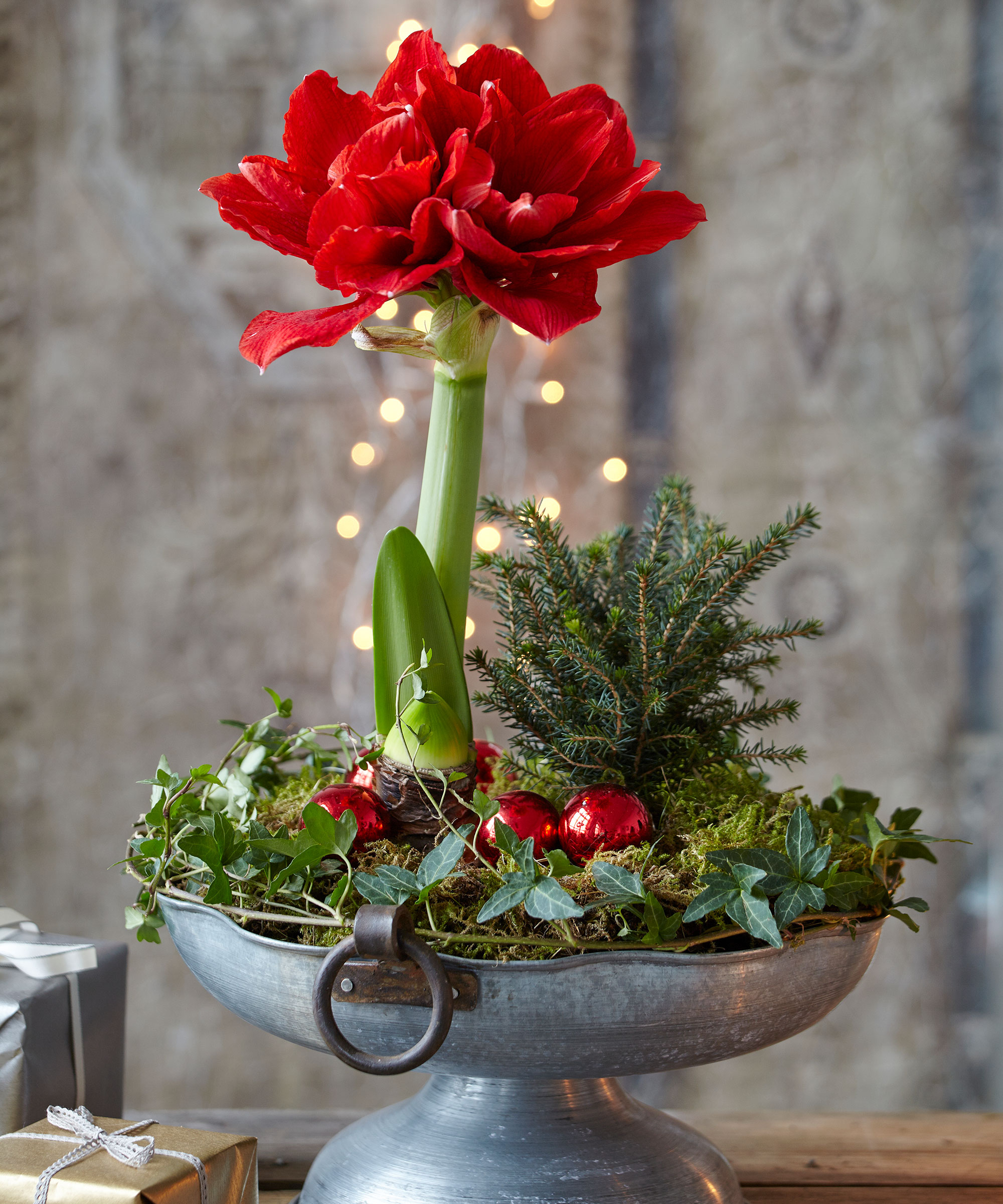
5. Leaning Amaryllis Flowers
Q: I spent a fortune on the most stunning amaryllis flowers, but now they've started to fall over. What did I do wrong?
One minute your showstopping amaryllis flowers are standing tall as the centerpiece of your holiday display, and the next, they’re leaning, sagging, or worse, broken. If you’ve found yourself trying to prop them up with makeshift supports after Christmas, you’re not alone.
The main culprit is usually the sheer weight of the blooms combined with a tall, slender stalk. Amaryllis plants grow quickly, and their stems can become top-heavy, especially if they’re not receiving enough light. In low light conditions, the stems stretch in search of brightness, becoming longer and weaker. Add a cluster of large, showy flowers at the top, and gravity inevitably wins. Another factor can be watering too much, which makes the stems less sturdy and prone to bending.
To prevent this from happening in the future, ensure proper amaryllis care. Place it in a bright spot where it can get plenty of natural light, but keep it away from direct sunlight that might scorch the leaves. Rotating the pot every few days can also encourage even growth.
If you're already struggling with a leaning stem, staking amaryllis is the only answer. Use a bamboo stick or a decorative support to gently secure the stem upright.

6. Post-Holiday Bulb Care
Q: I have heard that amaryllis can be kept indoors or even planted out in the garden for more blooms next year. What is the best thing to do?
With the right care, not only can you make an amaryllis rebloom, but often the flowers will be even better than before. The first step is to cut off the flower stalk once the blooms have withered, but leave the leaves intact. These green leaves are essential for photosynthesizing and storing energy for the next bloom cycle.
If you want to plant your amaryllis outside, it’s absolutely possible, but only if you live in a warm climate (USDA zones 8-11). Wait until the last frost has passed, then plant the bulb in a sunny, well-draining spot where it can continue to grow.
If you're in a cooler climate, then keeping the plant indoors is the better option. Place it in a bright spot, water it regularly, and even give it a little fertilizer to help it along.
The real frustration for many comes in the fall, when the plant needs to go dormant for about 8-10 weeks. This means cutting back the leaves and storing the bulb in a cool, dark place. It’s a waiting game, but once you bring it back out and see that first green shoot emerge, the effort feels completely worth it.

7. Cyclamen Turning Yellow
Q: I love pretty cyclamen over the holidays, but I usually toss the plants once the festivities are over. This year, I'd like to see if it's possible to keep one going as a houseplant – but it has already started to turn yellow and die back.
Cyclamen can be frustrating because they don’t behave like other houseplants. Once the flowers finish, the plant often starts to look tired, with yellowing leaves or a general limpness. This isn’t necessarily a sign that it’s dying; it’s often the plant preparing for its natural dormancy.
If you’re in a mild climate (zones 9-11), you can plant your cyclamen in a shaded spot in the garden, where it will likely reemerge and bloom the following winter.
However, in cooler zones, keeping the plant indoors is the better choice. Once the blooming season is over, practice good cyclamen care by watering sparingly and providing indirect light. As the plant enters dormancy, the leaves will die back, which can be discouraging, but it’s part of the cycle. When the foliage dies off completely, reduce watering and store the pot in a cool, dark place.
By early fall, you can bring it back into light, resume watering, and watch with pride as it begins to grow again.
More Houseplant Inspiration
- A rare houseplant expert shares 5 extraordinary, easy-care varieties to elevate your collection.
- Discover the hottest houseplants for 2025 – and what to look out for.
- Learn how to make a terrarium in a jar – and grow a beautiful miniature ecosystem.
- Shop indoor gardening essentials in the Gardening Know How Shop – from sensational houseplants to palnters and accessories.

Melanie is an experienced gardener and has worked in homes and gardens media for over 20 years. She previously served as Editor on Period Living magazine, and worked for Homes & Gardens, Gardening Etc, Real Homes, and Homebuilding & Renovating. Melanie has spent the last few years transforming her own garden, which is constantly evolving as a work in progress. She is also a passionate organic home grower, having experimented with almost every type of vegetable at some point. In her home, Melanie tends to an extensive houseplant collection and is particularly fond of orchids.
- Amy DraissDigital Community Manager
